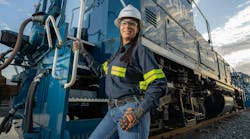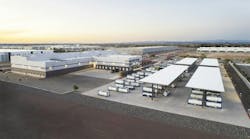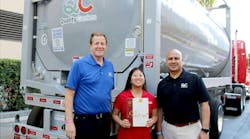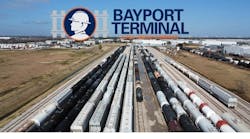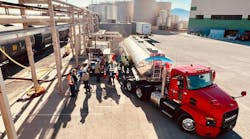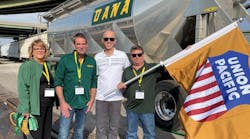FTR, a recognized thought leader in North American freight transportation intelligence, once again will be assisting the Intermodal Association of North America by organizing program sessions for the “Intermodal Economics & Environment” track in this year’s Intermodal EXPO education program. Intermodal EXPO 2016 will be held September 18-20 in Houston TX.
Presentations by FTR’s Larry Gross and Noël Perry, along with other key industry leaders, will focus on industry specific trends and forecasts useful to all intermodal supply chain stakeholders.
“We are pleased to once again help create the educational content at this year’s Intermodal EXPO,” said Larry Gross, partner and intermodal expert at FTR. “The industry is looking to intermodal for growth, and the question really is: can intermodal deliver? We intend that these sessions will deliver sophisticated analysis which will help businesses as they work to understand and forecast freight and equipment demand needs. The Intermodal EXPO has been the cornerstone event on the intermodal calendar for over 20 years; and, through our efforts and those of other Expo contributors, attendees will receive the latest, most comprehensive and actionable market intelligence available.”
Intermodal Economics & Environment sessions organized by FTR will include:
Intermodal Forecast--Supply, Demand, and Future Prospects
Where is intermodal now, and where are we headed? Join a panel of expert analysts for our annual in-depth review of the industry’s recent performance, future prospects, and key trends. Specific perspectives will include: the impact of the energy prices, rail service gains, liner challenges, and truckload competition.
Calming the Seas--Challenges in Liner Shipping and What It Means for the Rest of the Intermodal Supply Chain
December 2015 saw the first calls of an 18,000 TEU mega-ship on the west coast, and a major ocean carrier has announced a regular rotation of these ships. As carriers seek to lower costs, they are directing ever-larger vessels toward the high volume Asia-US lanes. However, the deployment of these ships has brought with it excess capacity and plunging rates, and has stretched terminal operations to the limit or beyond. What port infrastructure options are being offered to embrace these volume increases? How are the inland distribution channels adjusting to handle the "new norm" in volume surges? Our panel of industry players will examine the impacts across the complex intermodal supply chain from shipside to consignee.
Major OTR Capacity Shortages--Will Intermodal be Ready?
Predictions are being made that we are standing on the cusp of "The Mother of All Truck Capacity Shortages" as early as next year. Such predictions have been made before without such shortages materializing, however. Can we say that, “this time it’s different,” and the shortage will really come to pass? If it does, what does it mean for intermodal? Will intermodal be ready for the surge, or will it fall victim to the same problems as over-the-road truckers?
High Service? The Rise of E-Commerce and the Future of Expedited Intermodal
The rise of E-Commerce and associated services has fueled ever-increasing service expectations on the part of customers. In other words, when we want our product, we want it ASAP. Parcel carriers are bearing the brunt of the burden. These carriers have been important customers since the dawn of the intermodal age, but what about the future? How is the marketplace requirement evolving under the pressure of E-commerce, and what must intermodal do to remain in the game for this ever-more-important and fast growing market? Our panel will examine this important issue from a variety of angles to determine the answers.
The Growth Imperative--How Can Intermodal Regain Its Growth Mojo?
Of all the freight modes, intermodal has had the strongest rebound from the days of the Great Recession. Intermodal was the first mode to regain pre-recession traffic levels, and its growth has consistently exceeded that of over-the-road truck. The momentum has been waning, however, and domestic intermodal growth has tapered down each year since 2010, to just 2.8% in 2015. Where will growth come from in the years to come and what should intermodal do to tap that potential? This session will look at the underlying economics, as well as the macro trends driving the business, including highway to rail conversion, new intermodal products & services, length of haul characteristics, reinvigoration of North American manufacturing, Mexican near-shoring, trucking industry headwinds and more. Join this comprehensive review of the future prospects to build your intermodal presence.
Visit www.IntermodalEXPO.com for the latest information.

